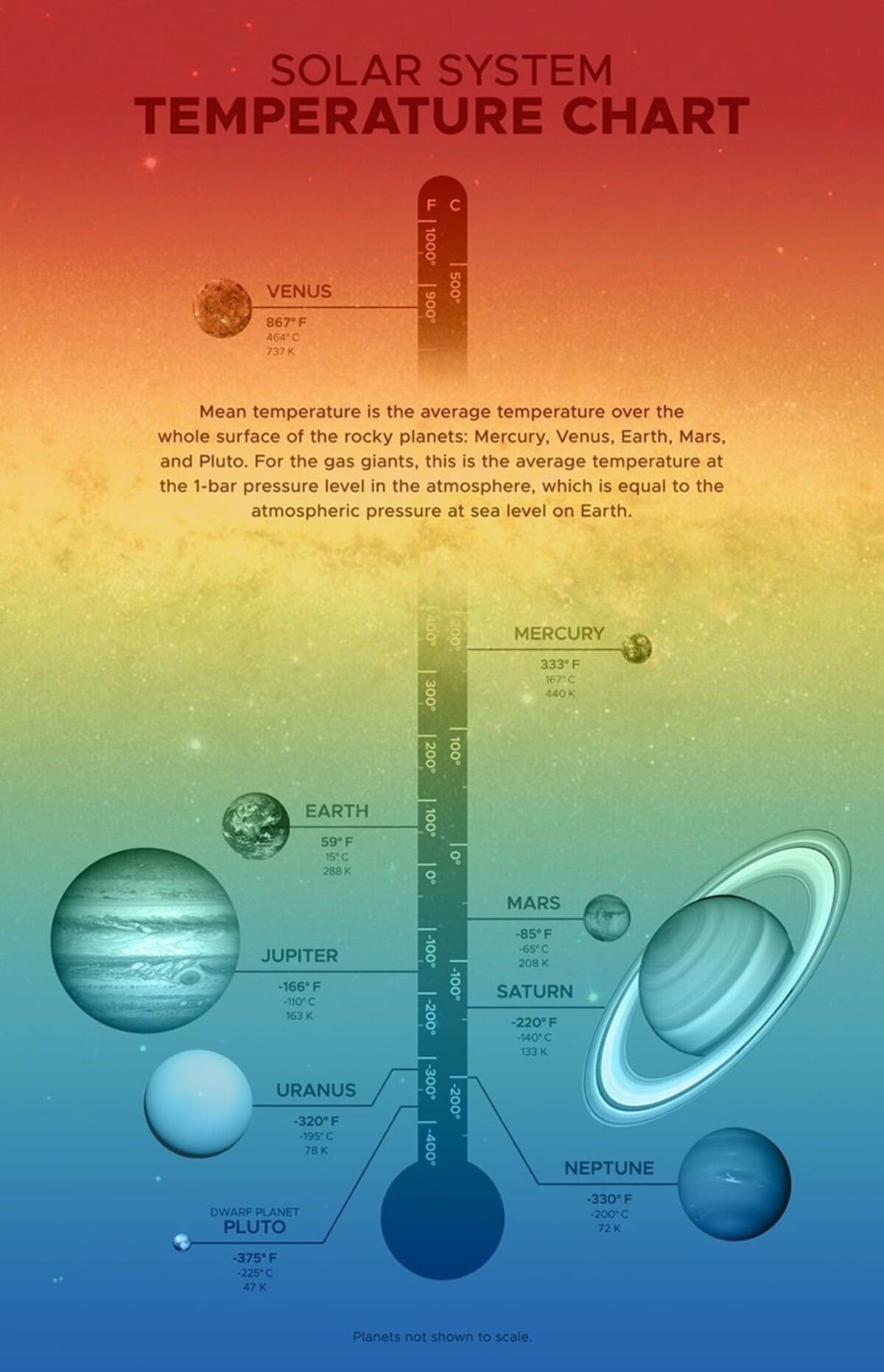
The surface temperature of planets decreases as they move away from the star.
As a rule, the surface temperature of planets decreases as they move away from the Sun. An exception is Venus: its proximity to the star combined with a dense atmosphere makes this celestial object the hottest planet in our system.
The average temperatures of the planets in the Solar System are:
Mercury: +167 °C;
Venus: +464 °C;
Earth: +15 °C;
Mars: −65 °C;
Jupiter: −110 °C;
Saturn: −140 °C;
Uranus: −195 °C;
Neptune: −200 °C;
Dwarf planet Pluto: −225 °C.

Overall, the surface temperatures of the planets decrease with increasing distance from the Sun. Except for Venus, as its dense atmosphere creates a powerful greenhouse effect and heats the surface to temperatures exceeding the melting point of lead.
Mercury rotates slowly on its axis and has a thin atmosphere, resulting in nighttime temperatures that can be more than 500 degrees Celsius lower than daytime temperatures. At night, temperatures on Mercury can drop to −179 °C.
Temperatures for the gas and ice giants (Jupiter, Saturn, Uranus, and Neptune) are given for the atmospheric level corresponding to sea level pressure on Earth.














Leave a comment